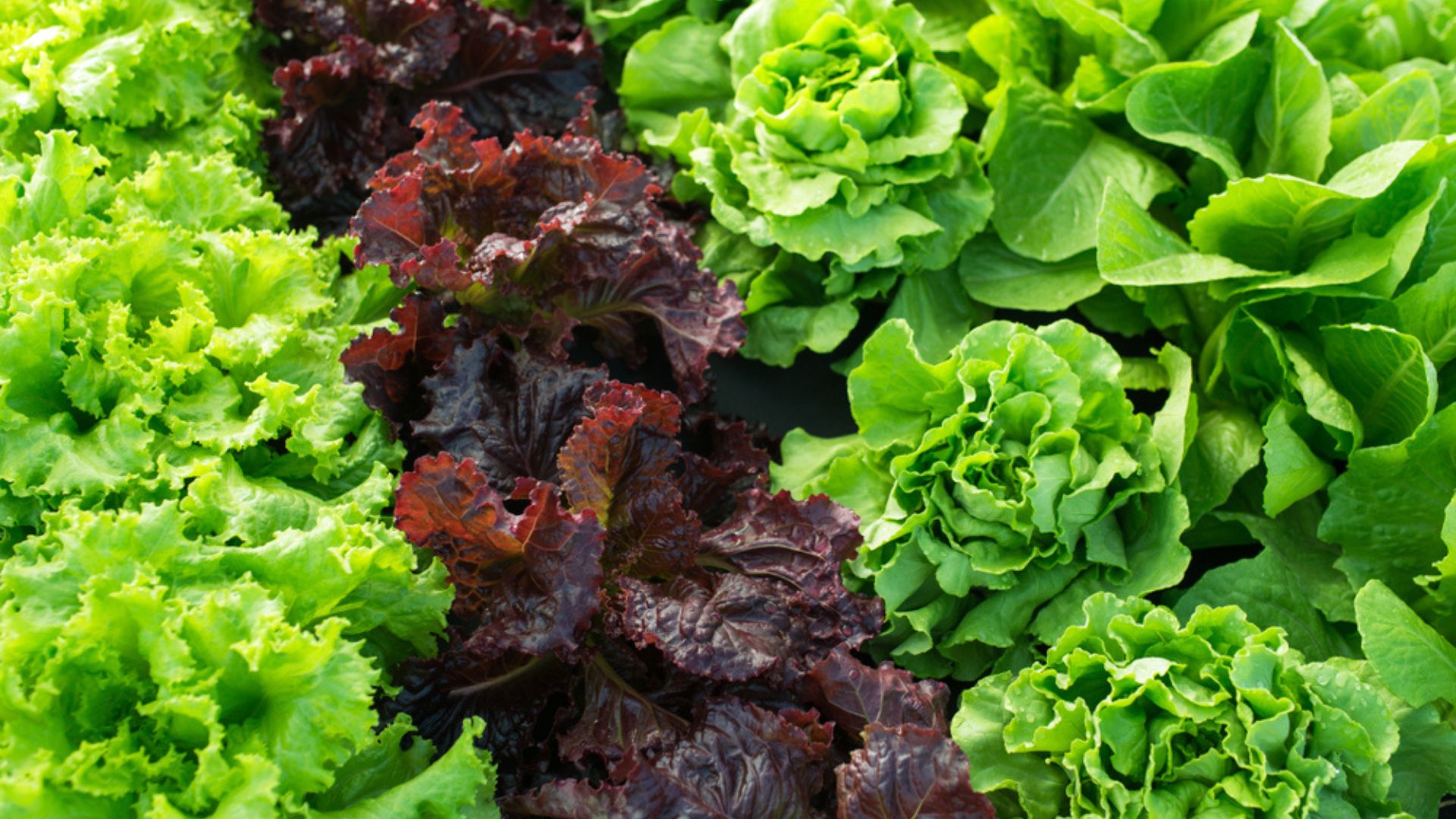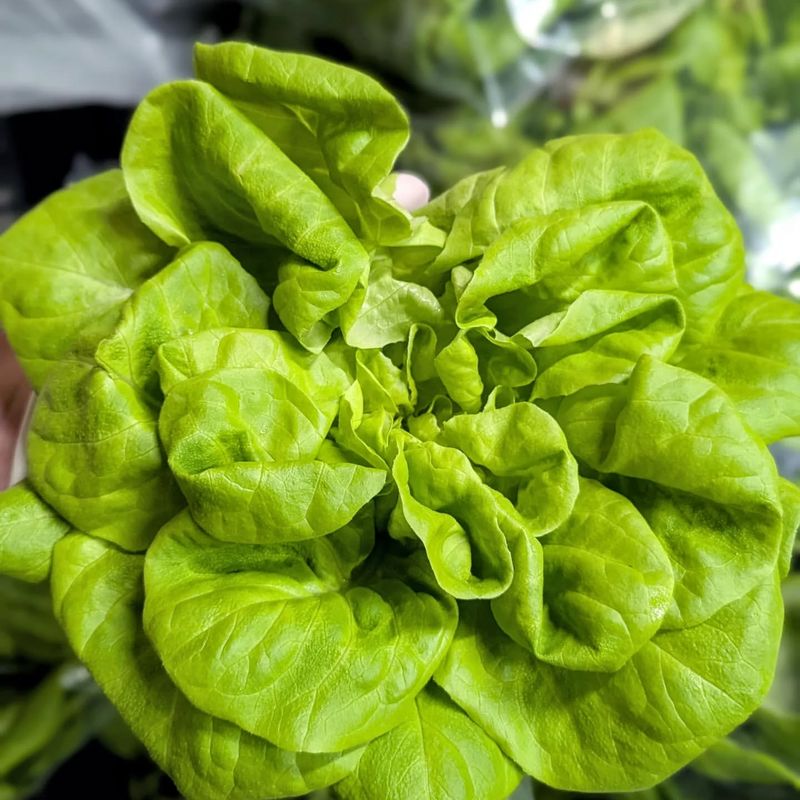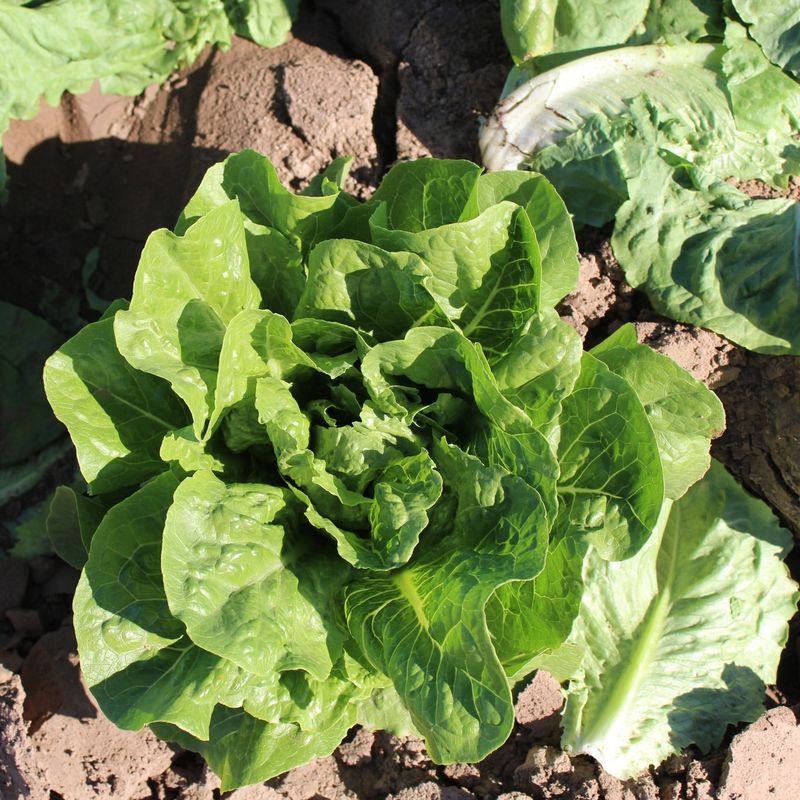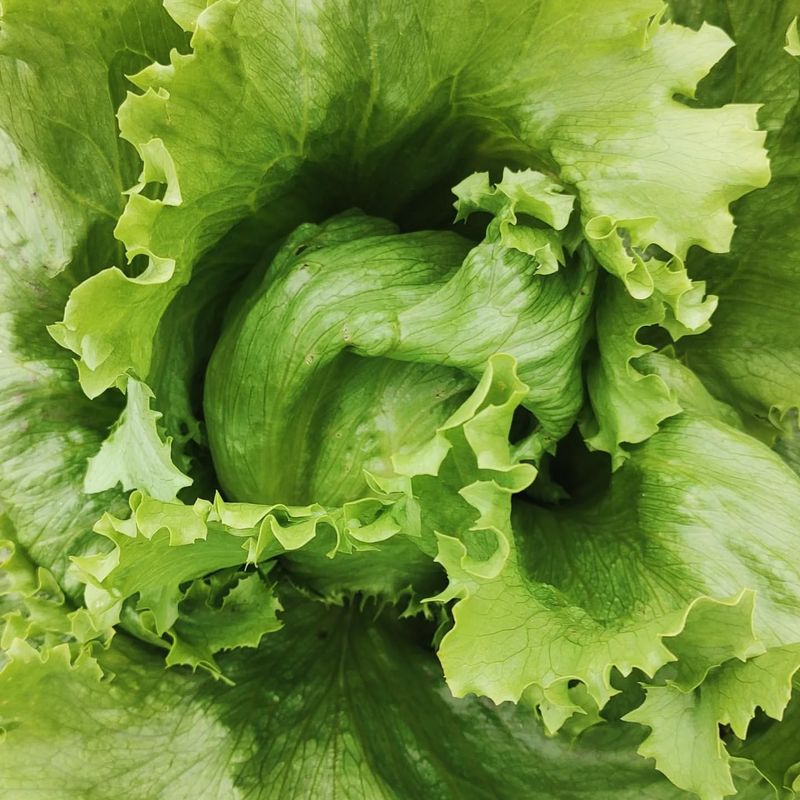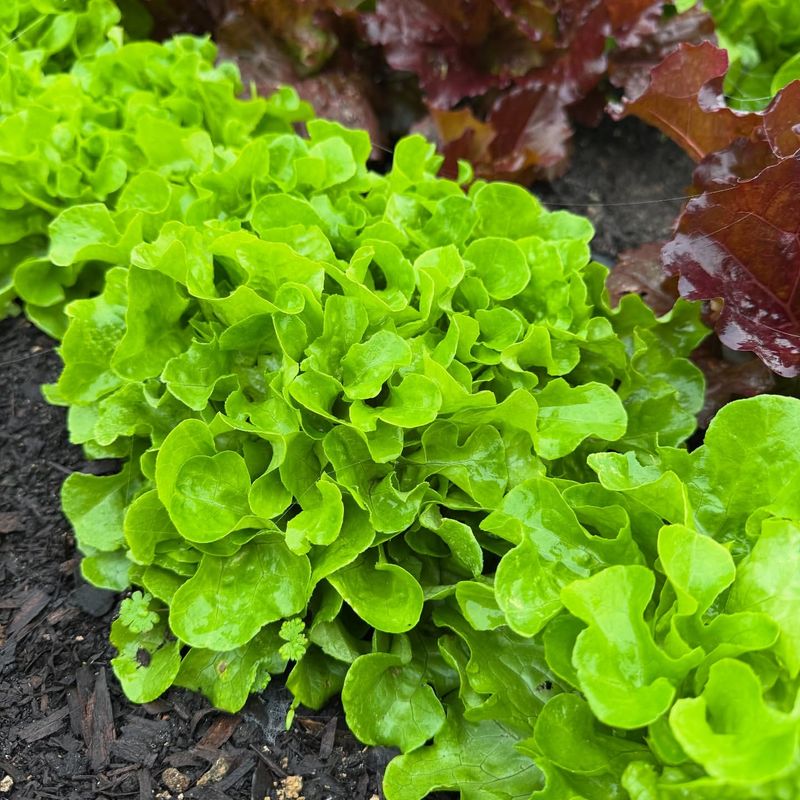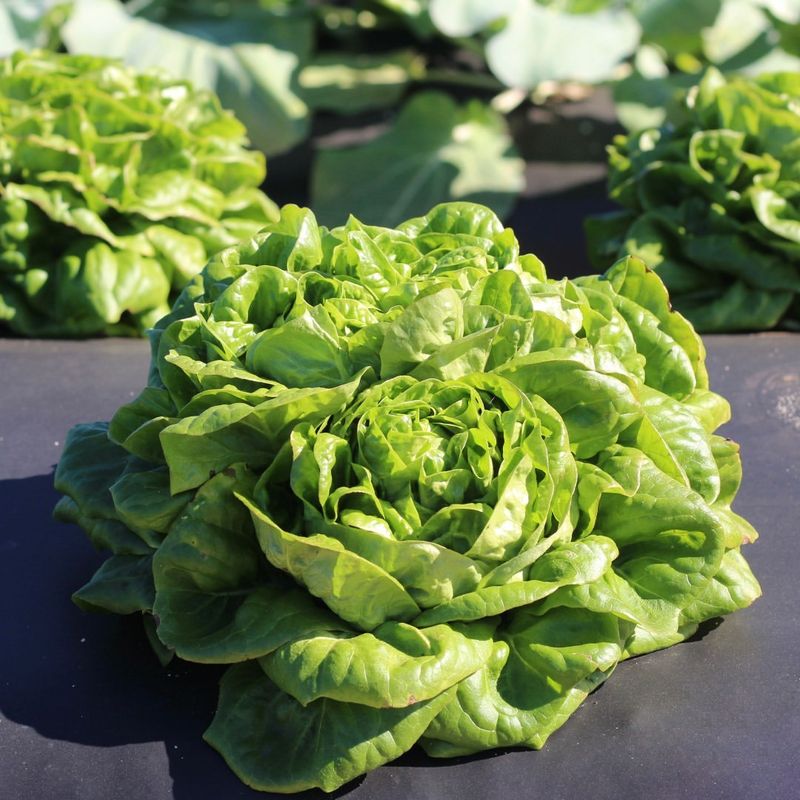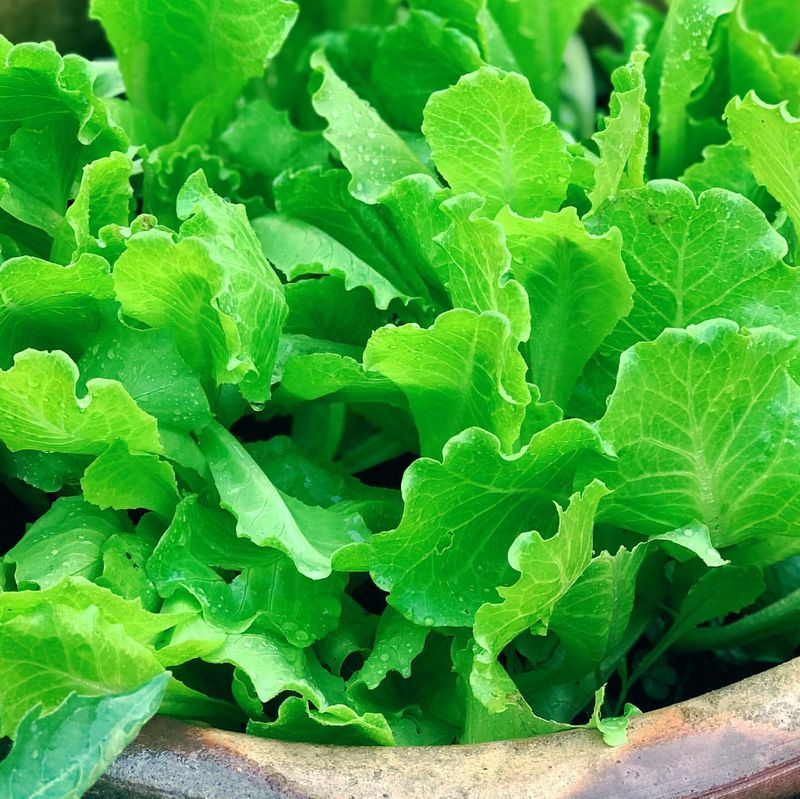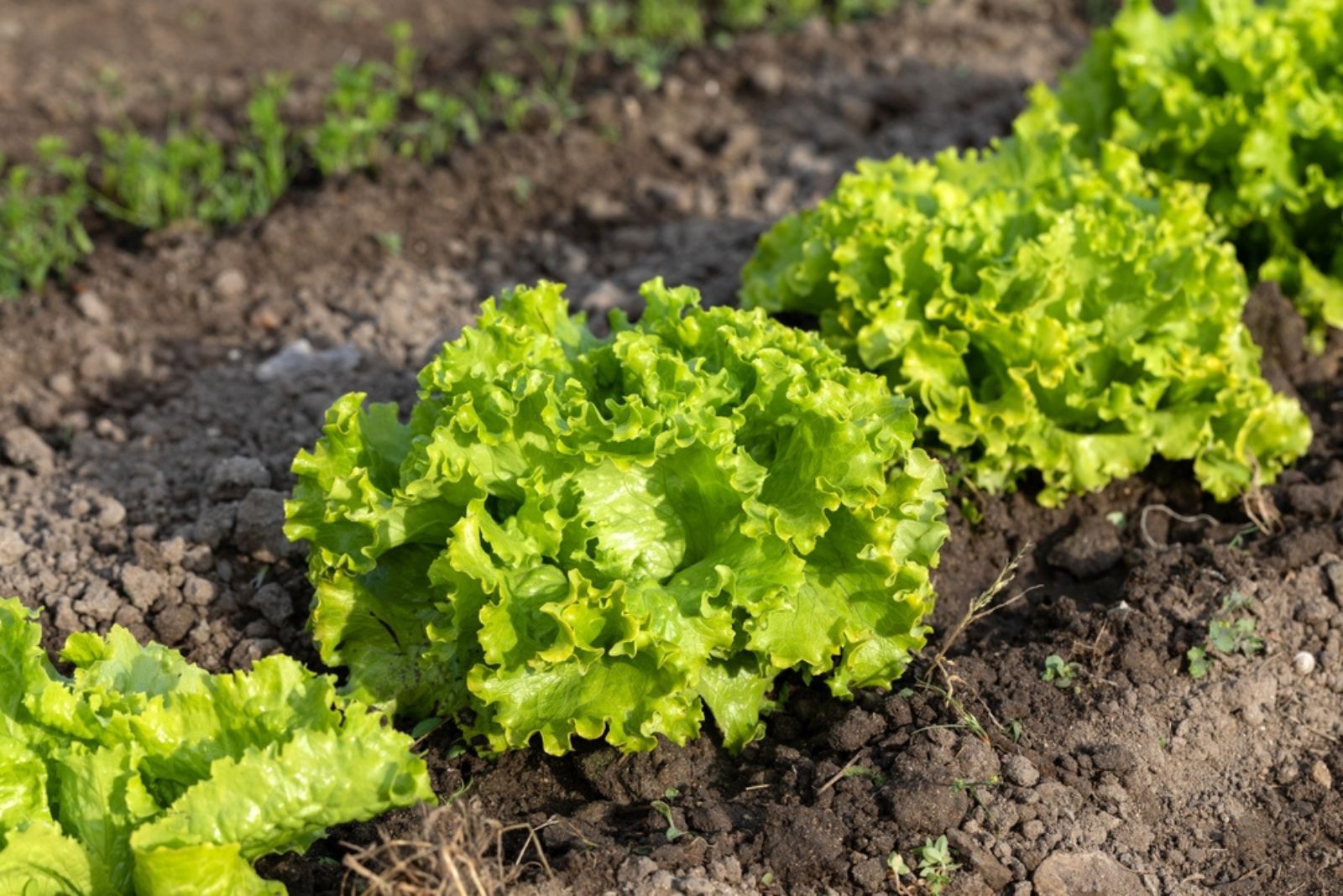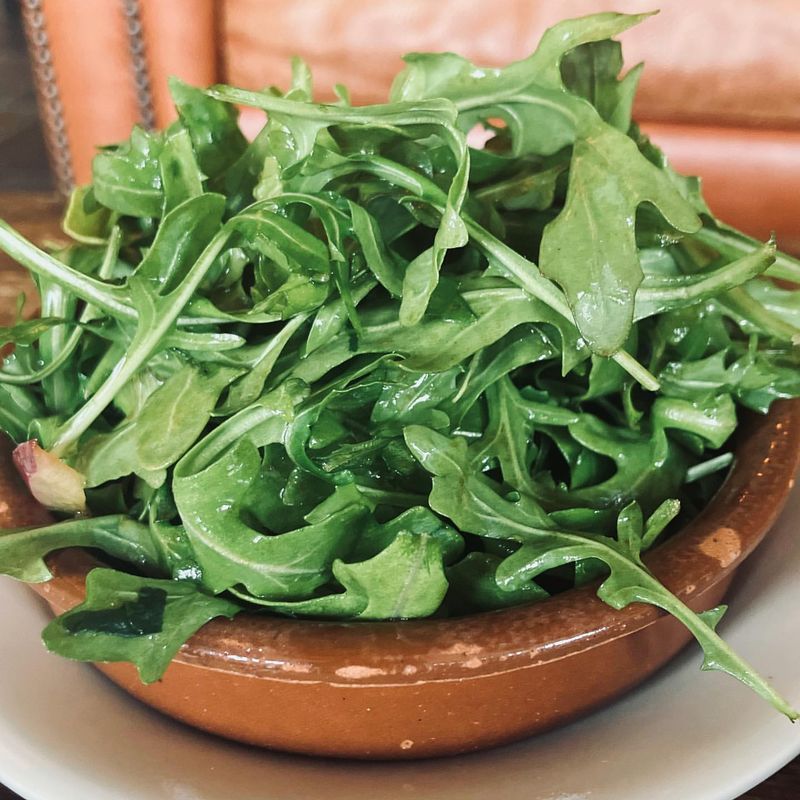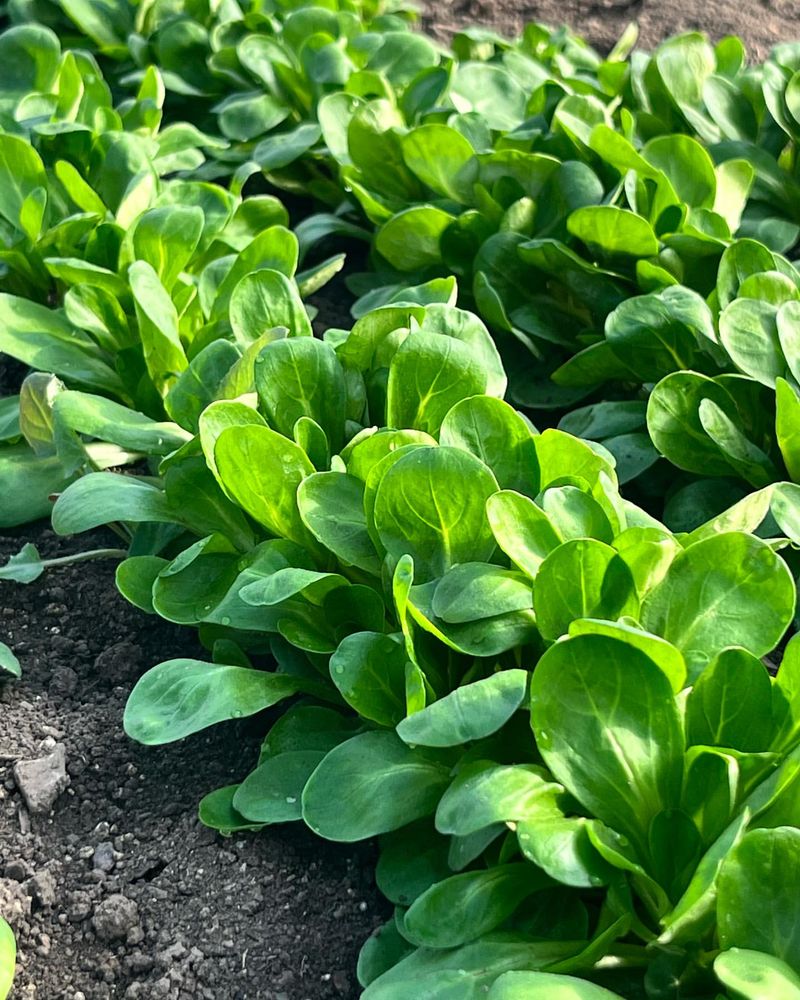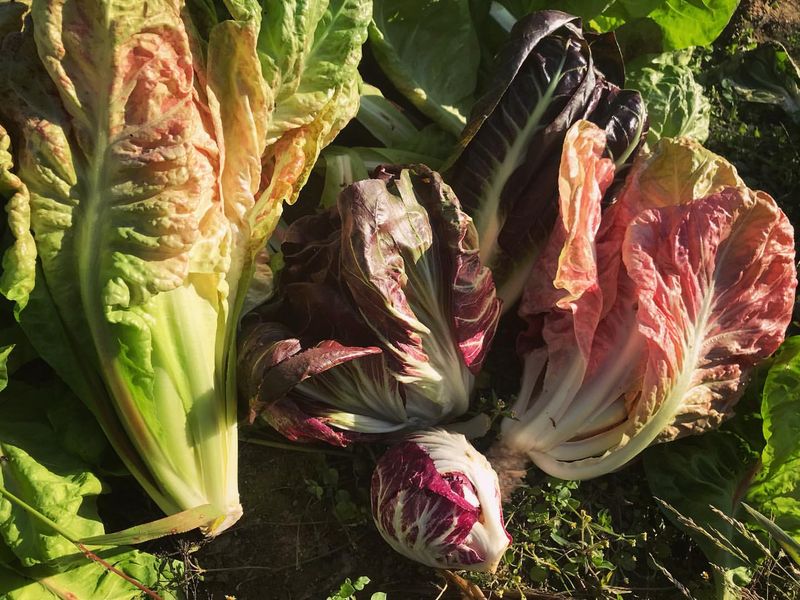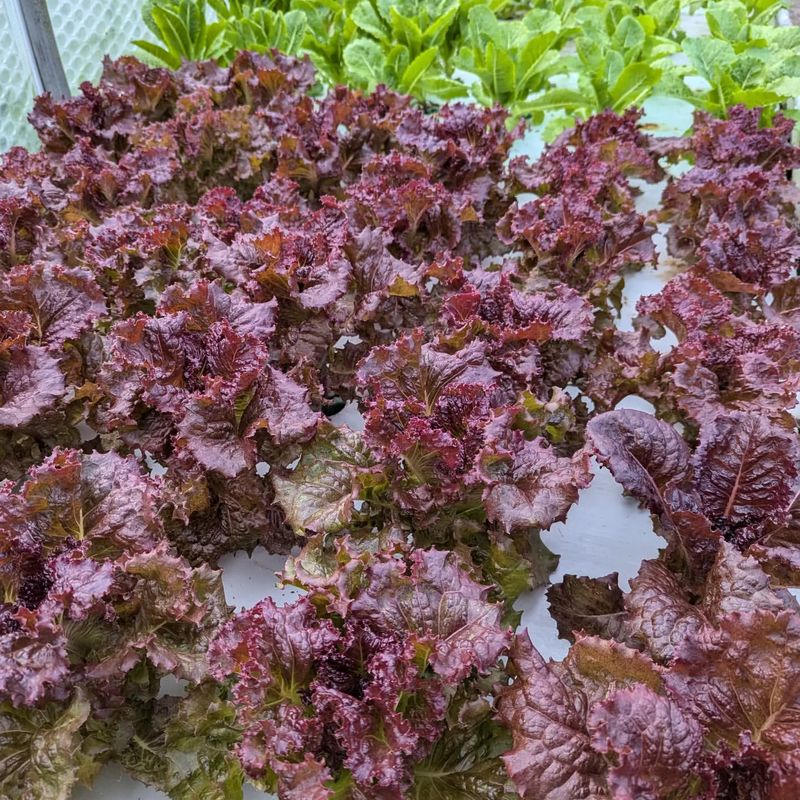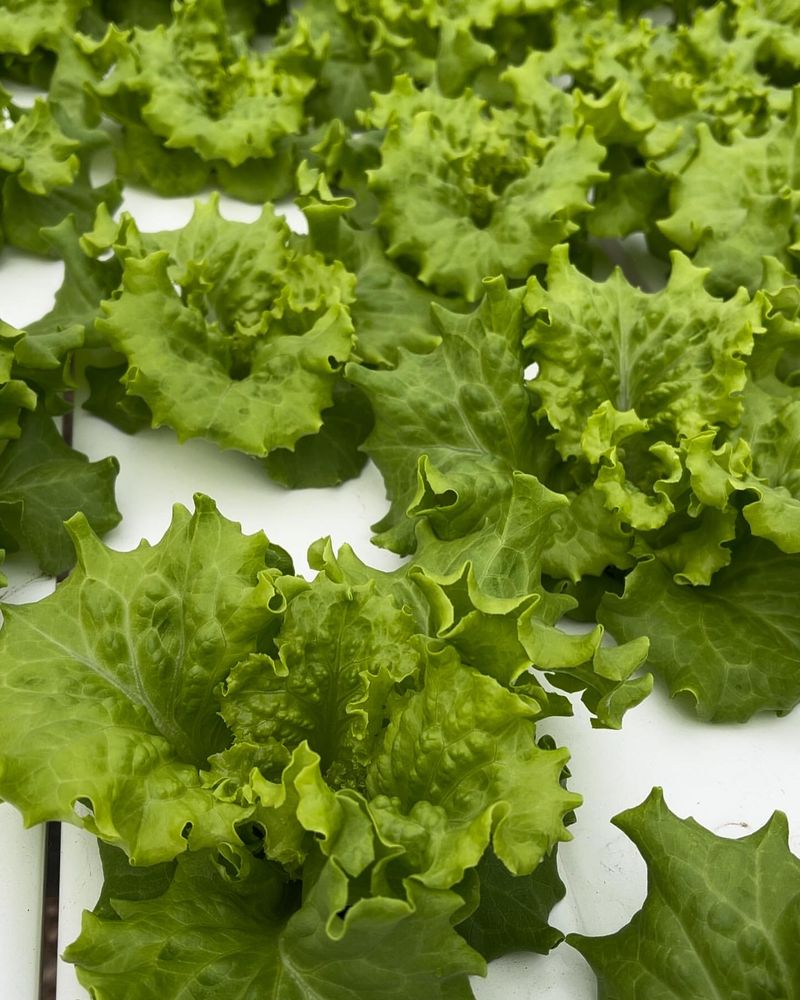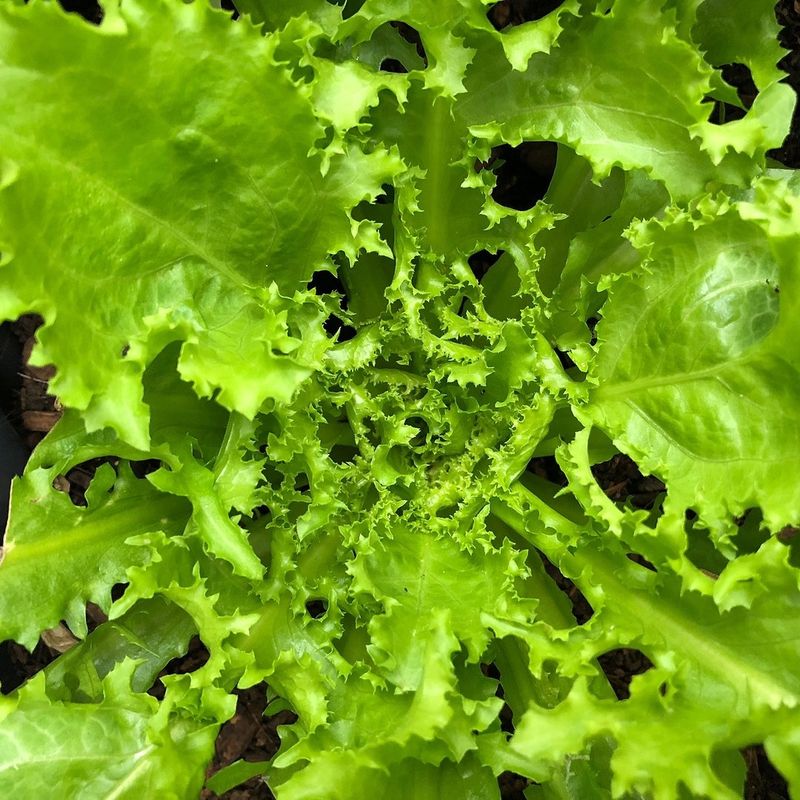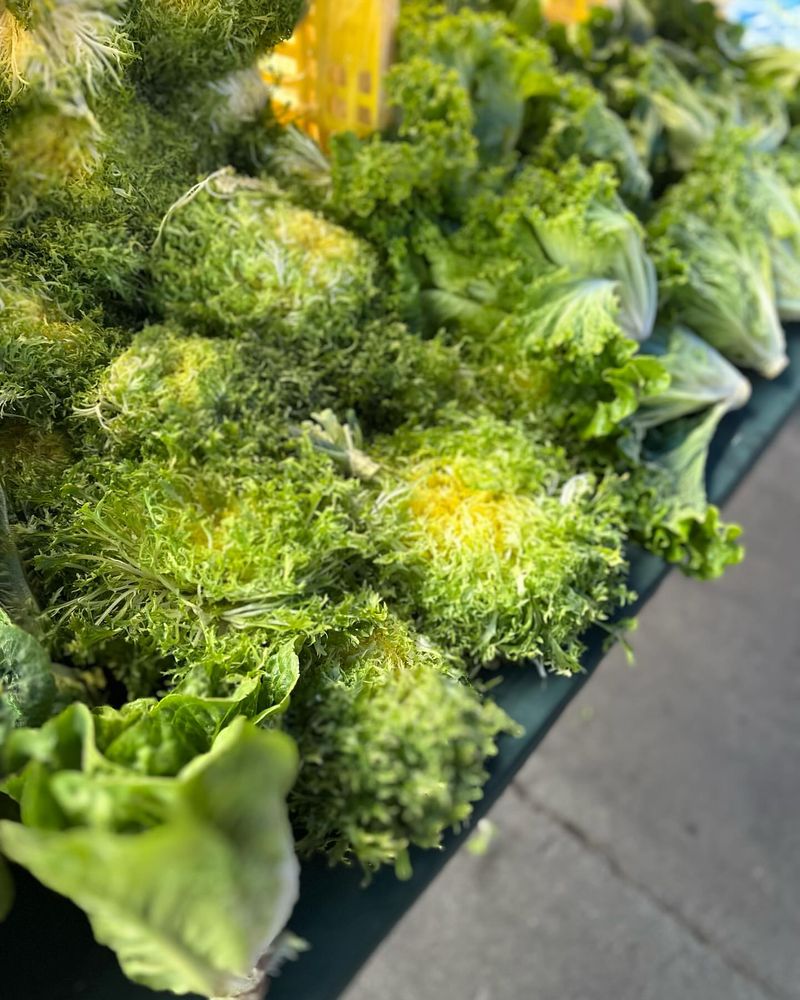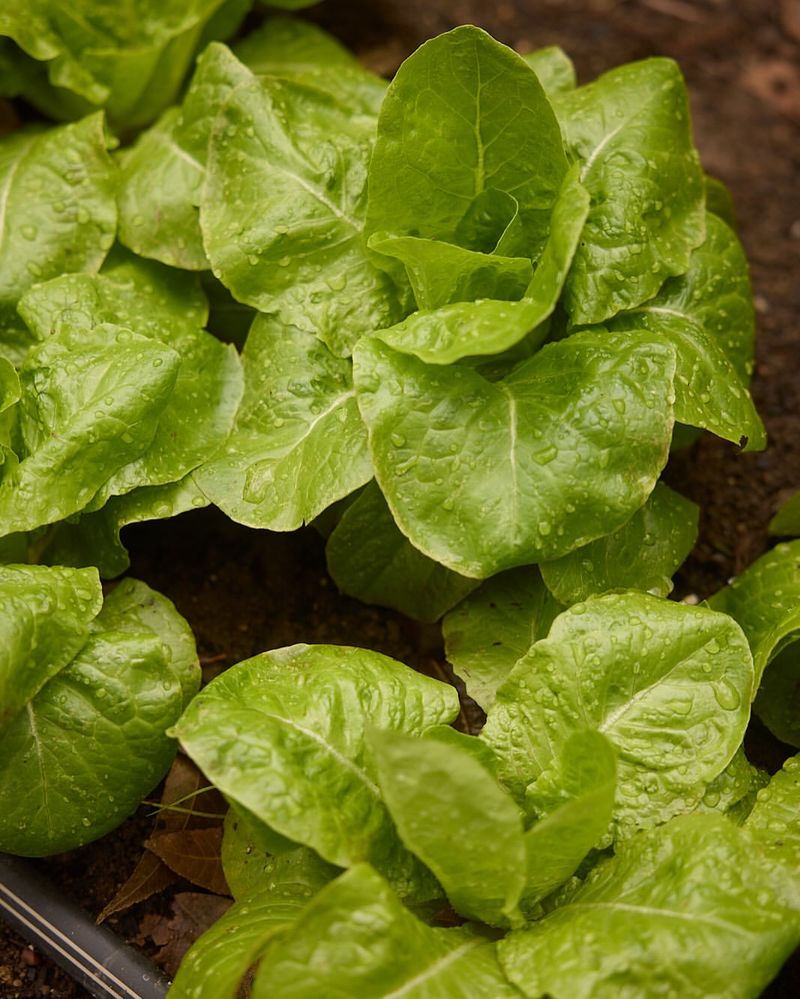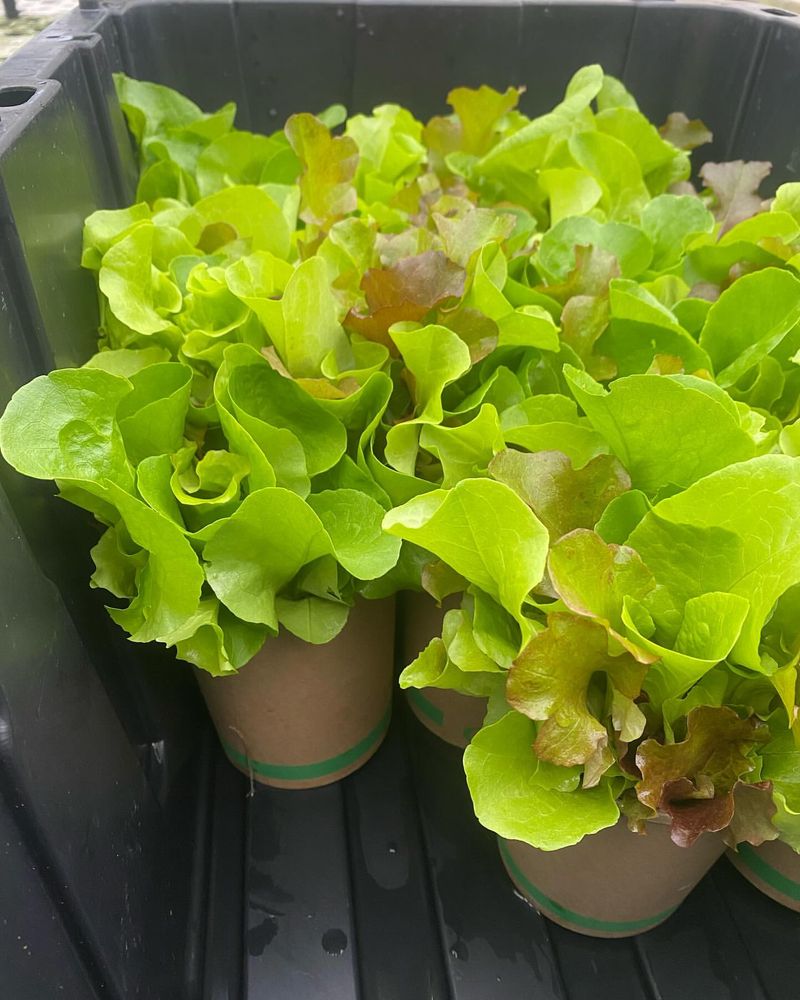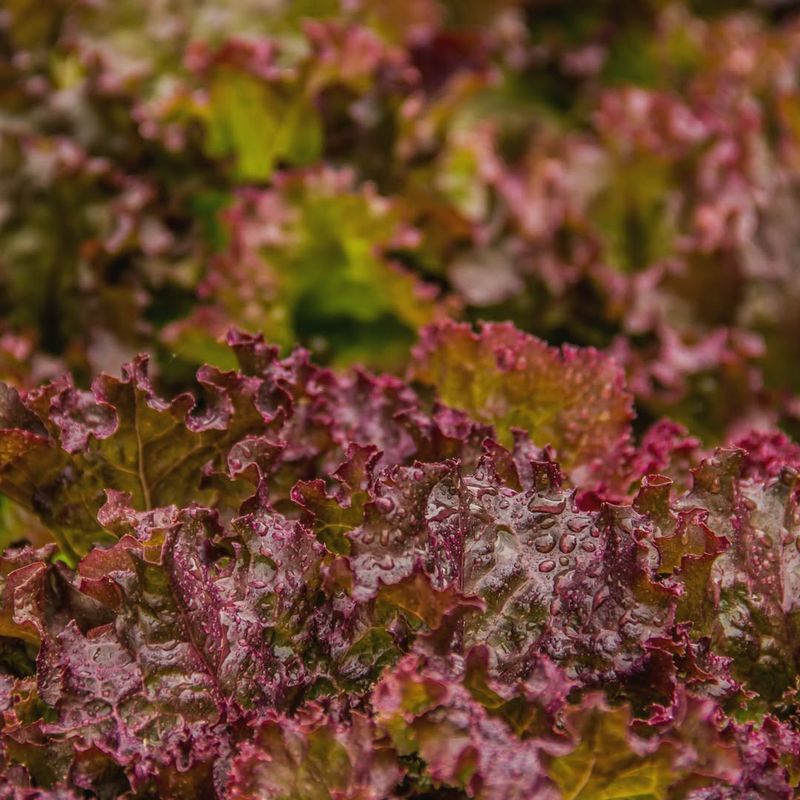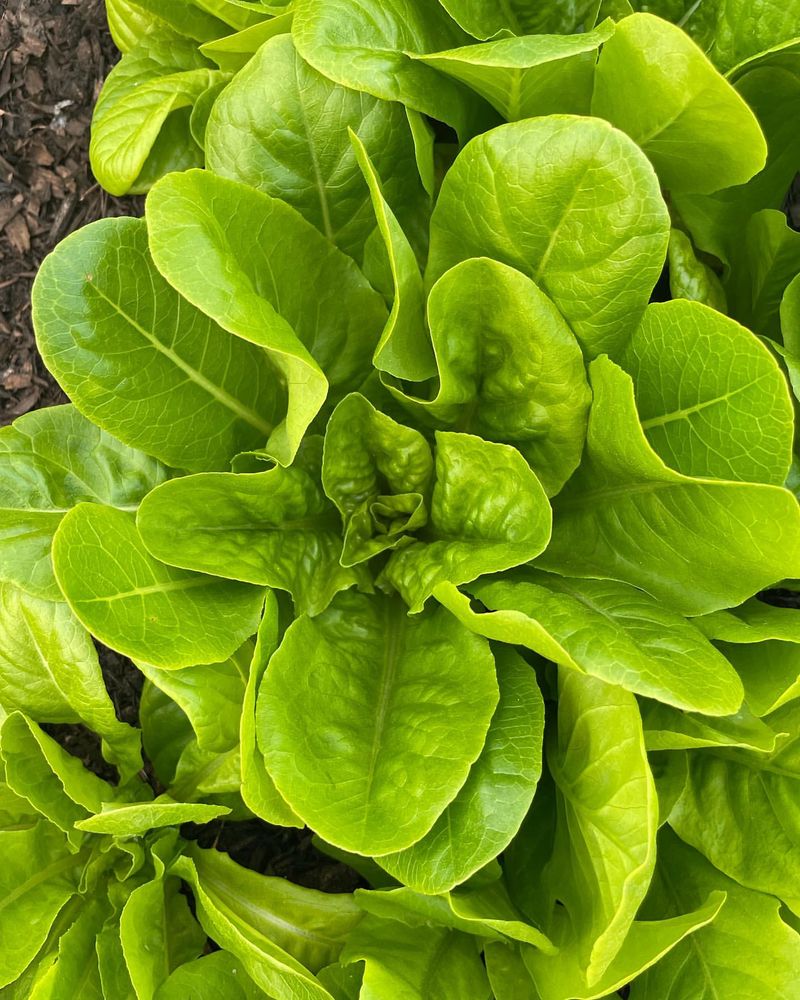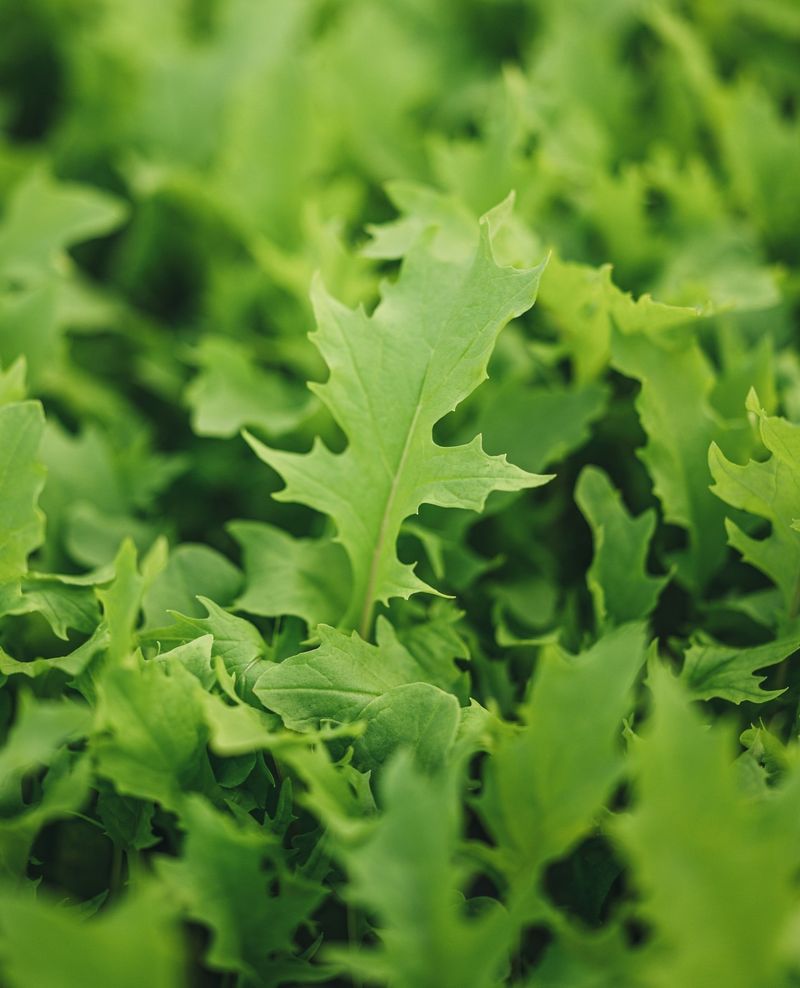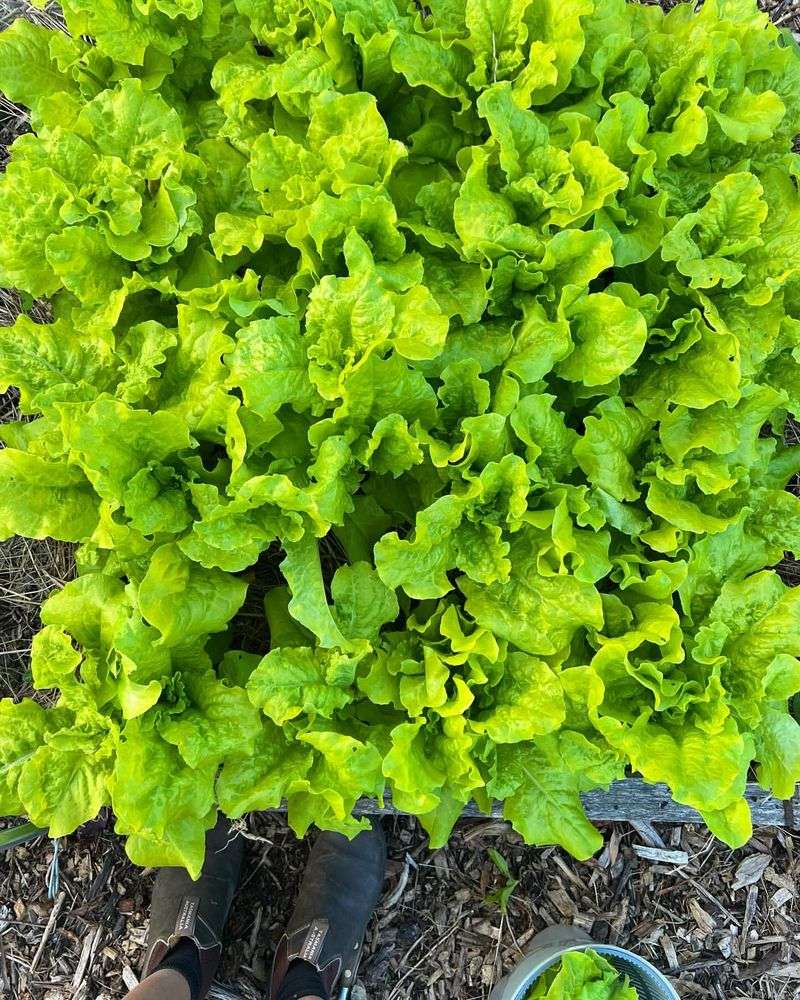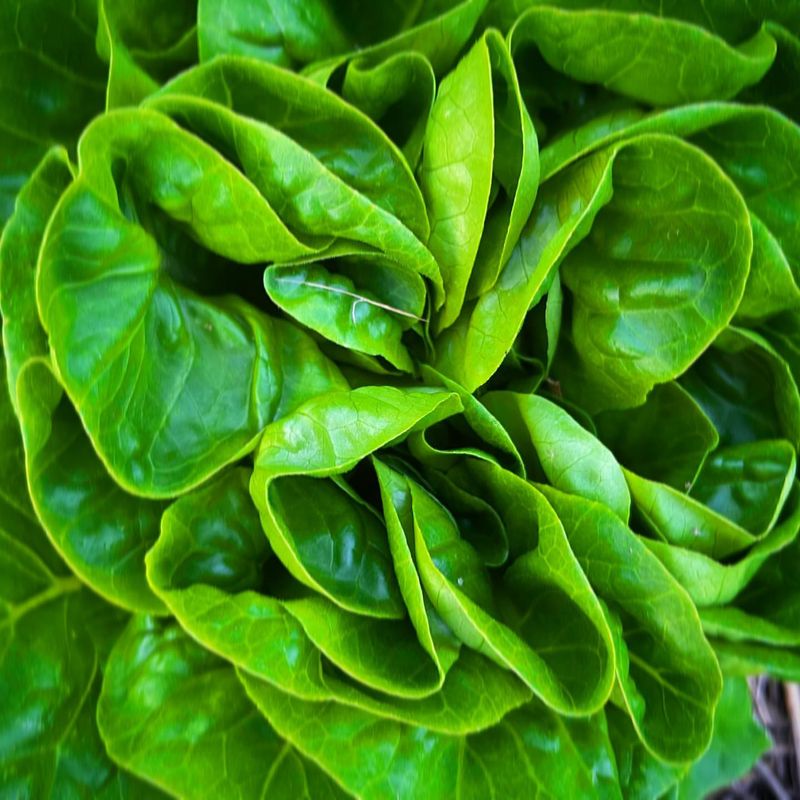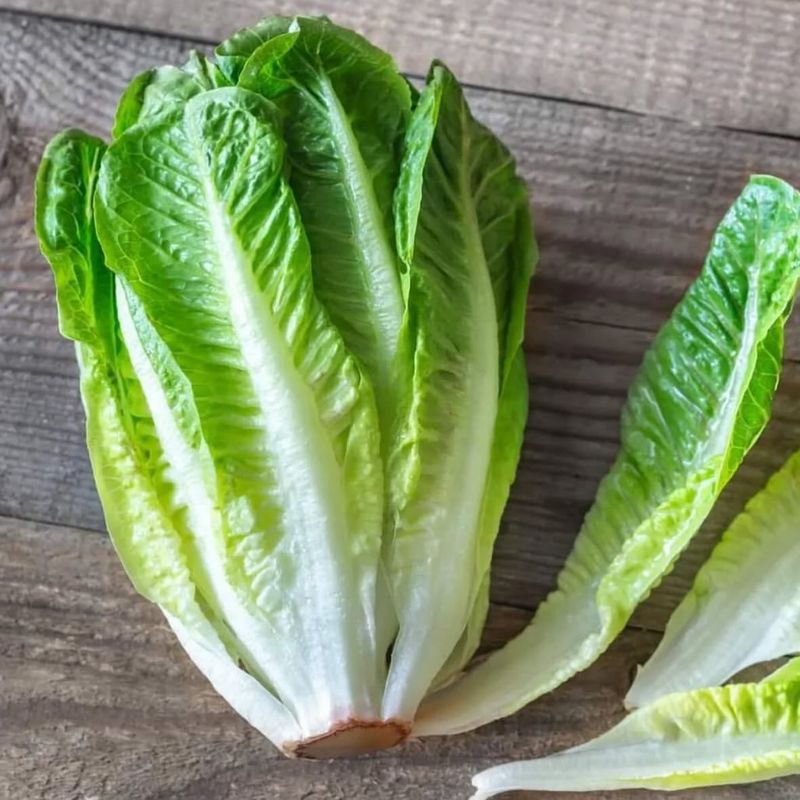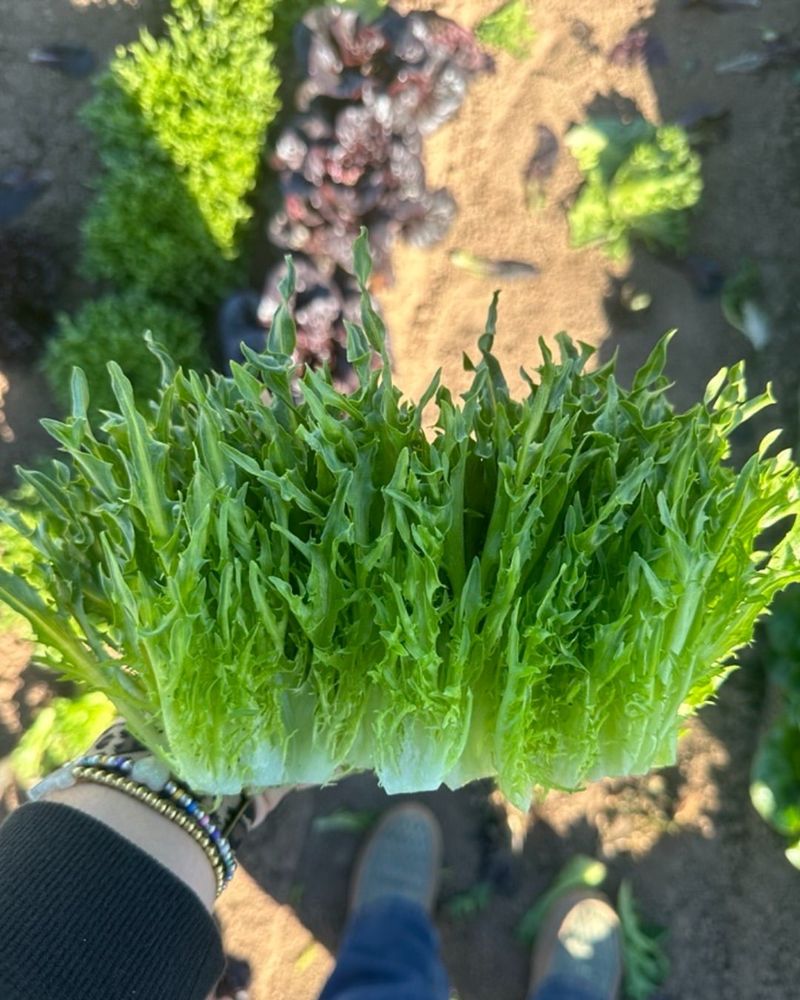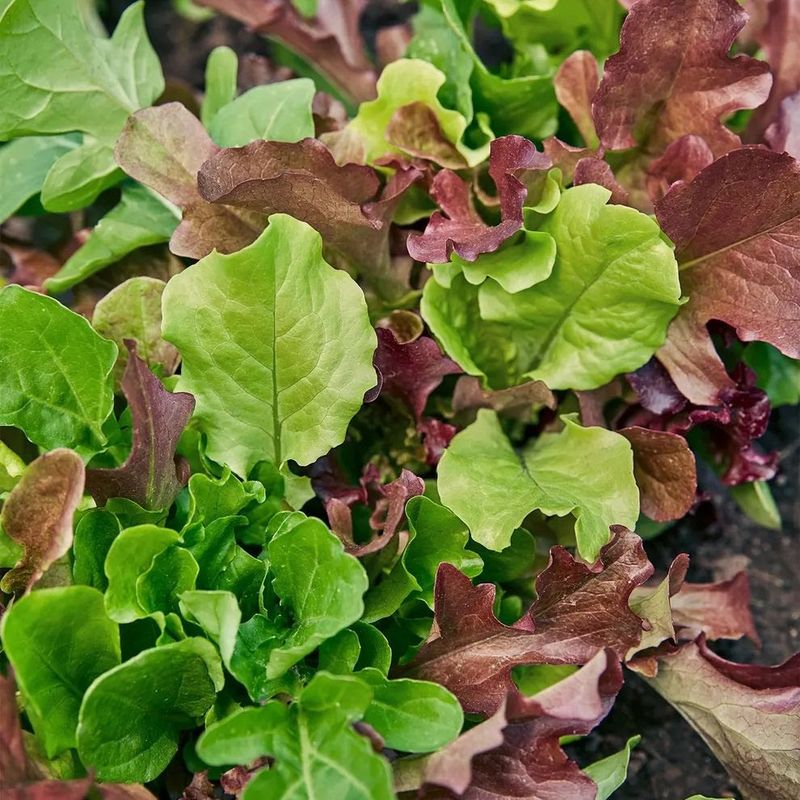Growing lettuce in your garden can be an incredibly rewarding experience, offering a variety of textures and flavors. Whether you prefer a crisp crunch or tender leaves, there’s a type of lettuce that will meet your taste preferences and gardening conditions.
Explore a diverse range of lettuces, perfect for salads, sandwiches, and more.
1. Butterhead Lettuce
In the world of garden greens, Butterhead lettuce stands out. With its soft, buttery leaves, this variety offers a mild flavor that complements any salad or sandwich. Its leaves form a loose head, making it easy to harvest.
Butterhead thrives in cooler climates, providing gardeners with a reliable leafy crop. Plant it in partial shade for the best results. Regular watering helps maintain its tenderness.
As a versatile choice, this lettuce can be grown in containers on patios. Experiment with companion planting to maximize garden space and improve yields.
2. Romaine Lettuce
For those seeking a crisp, refreshing bite, Romaine lettuce is ideal. Known for its tall, spoon-shaped leaves, Romaine is a staple in Caesar salads. Its hearty texture holds up well to dressings.
Romaine prefers well-drained soil and full sun exposure. It’s moderately heat-tolerant, making it a great summer crop. Space plants evenly to ensure healthy growth.
Gardeners appreciate its extended harvest window. When cut correctly, Romaine can regrow, offering multiple harvests. Add it to sandwiches for an extra crunch or grill leaves for a smoky flavor.
3. Iceberg Lettuce
In many kitchens, Iceberg lettuce is synonymous with crispness. Its tightly formed heads and pale green leaves are perfect for crunchy salads and garnishes. Iceberg’s neutral flavor pairs well with bold dressings.
This lettuce prefers cool conditions and ample water. Provide consistent moisture to prevent bitterness. Plant in well-prepared soil for the best results.
While not the most nutrient-dense, Iceberg is appreciated for its texture. Consider pairing it with other greens for a balanced diet. Its crisp leaves also make excellent wraps for low-carb meals.
4. Oakleaf Lettuce
Incorporating unique shapes, Oakleaf lettuce brings visual interest to your garden. Named for its resemblance to oak tree leaves, this variety adds texture to any salad mix. Its tender leaves offer a mild, sweet flavor.
Oakleaf is adaptable, growing well in various climates. It thrives in both soil and hydroponic systems. Regular harvesting encourages continuous leaf production.
Gardeners often choose Oakleaf for its pest resistance. It’s an excellent option for those seeking organic solutions. Experiment with different colored varieties to enhance your garden’s aesthetic.
5. Bibb Lettuce
With its smaller, compact heads, Bibb lettuce is a favorite for home gardens. Its deep green leaves provide a tender bite, making it a delightful addition to salads. This variety is known for its sweet, buttery taste.
Bibb lettuce thrives in cool to moderate temperatures. Protection from intense heat ensures lush growth. Water consistently to maintain its succulent texture.
Gardeners value Bibb for its quick maturity. It’s perfect for those who enjoy fresh, homegrown produce. Try layering it in sandwiches or as a base for healthy wraps.
6. Looseleaf Lettuce
Simplicity defines Looseleaf lettuce. This variety is loved for its ease of growth and harvesting. Its leaves are harvested individually, making it a perfect choice for continuous picking.
Looseleaf thrives in various soil types and climates. It’s especially suited for raised beds and small gardens. Regular cutting encourages regrowth, extending the harvest season.
Versatility is a key feature, as it comes in many colors and textures. Mix different types for a vibrant salad bowl. Its quick growth cycle makes it ideal for successive planting.
7. Batavian Lettuce
Adding color and crunch, Batavian lettuce is a gardener’s delight. Known for its crinkled leaves, this variety offers a satisfying texture and mild flavor. Its reddish hue adds visual appeal to dishes.
Batavian prefers sunny spots and well-drained soil. It’s moderately heat-tolerant, thriving even in warmer months. Ensure consistent watering to prevent leaf bitterness.
Gardeners appreciate Batavian for its resilience against bolting. Its crisp leaves work well in salads or as garnishes. Experiment with grilled Batavian for a unique texture and taste.
8. Arugula Lettuce
Spice up your greens with Arugula lettuce. Known for its peppery taste, this variety adds a bold flavor to salads and sandwiches. Its dark green, serrated leaves are unmistakable.
Arugula prefers cooler temperatures and partial shade. It’s a fast-growing crop, perfect for successive planting. Ensure soil remains moist to avoid bitterness.
Gardeners love its versatility. Use young leaves for a milder taste or mature leaves for a stronger punch. Arugula also makes a great pizza topping or pesto ingredient, adding nutritional value.
9. Mache Lettuce
Also known as lamb’s lettuce, Mache offers a nutty, delicate flavor. With small, round leaves forming a rosette, it’s a unique addition to your garden. Its tender texture enhances salads and garnishes.
Mache thrives in cool, shaded environments. It’s slow to bolt, providing an extended harvest period. Water consistently to maintain its soft texture.
Gardeners choose Mache for its winter hardiness. It’s one of the few greens that grow well in colder months. Pair it with sweet dressings for a balanced, flavorful dish.
10. Radicchio Lettuce
For a burst of color, Radicchio lettuce is unmatched. Its deep red leaves and white veins create a striking appearance. Known for its slightly bitter taste, it adds an interesting depth to salads.
Radicchio prefers cool weather and well-drained soil. It’s a slow-growing variety, requiring patience but rewarding with beauty. Space plants adequately for healthy heads.
Aside from salads, Radicchio is versatile in cooking. Try grilling or roasting it to mellow its bitterness. Its vibrant color also makes it a stunning garnish for various dishes.
11. Red Leaf Lettuce
Incorporating color into your garden, Red Leaf lettuce is a beautiful choice. Its vibrant red-tinted leaves bring visual appeal and a mild flavor to dishes. The tender leaves are ideal for fresh salads.
Red Leaf thrives in cool conditions, growing well in both spring and fall. Regular watering ensures lush growth. Plant in well-drained soil to prevent root rot.
Gardeners appreciate its quick maturity. It’s perfect for those seeking early harvests. Pair with other greens to create colorful, nutritious salads. Its striking color also enhances food presentation.
12. Green Leaf Lettuce
Bringing a classic touch, Green Leaf lettuce is a staple in many gardens. With its lush, green leaves, it offers a fresh, mild flavor. It’s versatile, making it suitable for various dishes.
Green Leaf prefers cooler temperatures and well-drained soil. Regular watering is essential for healthy growth. Its leaves are harvested individually for continuous supply.
Gardeners love its simplicity and ease of growth. It’s ideal for beginners and seasoned growers alike. Use it as a base for salads or as a garnish for added texture. Its vibrant color enhances any dish.
13. Escarole Lettuce
In the realm of leafy greens, Escarole stands out. Known for its broad, curly leaves, this lettuce offers a slightly bitter taste, adding depth to dishes. It’s a favorite in Mediterranean cuisines.
Escarole prefers cooler climates and rich soil. Adequate spacing ensures full, healthy heads. Regular watering helps maintain its tender texture.
Gardeners appreciate its versatility. Use it raw in salads or cook it for a milder flavor. Escarole pairs well with beans and soups, enhancing their nutritional value. Its robust texture holds up well in various preparations.
14. Frisée Lettuce
For a touch of elegance, Frisée lettuce is a great choice. Its frilly, light green leaves add a sophisticated look and a mildly bitter taste to salads. Often used in gourmet dishes, it elevates any meal.
Frisée thrives in sunny locations with well-drained soil. Regular watering ensures its tender texture. It’s moderately heat-tolerant, suitable for warm climates.
Gardeners love its unique appearance. Frisée is perfect for adding height and interest to garden beds. Pair it with sweet dressings to balance its bitterness. It also serves as an attractive garnish.
15. Little Gem Lettuce
Among the smaller varieties, Little Gem lettuce is cherished for its compact size. Despite its small stature, it offers a sweet, crunchy bite that’s irresistible. Its dense heads are packed with flavor.
Little Gem thrives in well-drained soil and full sun. It’s a fast-growing variety, perfect for continuous harvests. Protect from intense heat to maintain quality.
Gardeners appreciate its space efficiency. Ideal for small gardens or containers, it’s a great choice for urban gardening. Use it as a base for salads or grill the heads for a unique twist.
16. Cress Lettuce
Incorporating a peppery punch, Cress lettuce is a dynamic addition to any garden. Its small, delicate leaves are packed with flavor, offering a unique taste profile. Often used as a garnish, it adds zing to dishes.
Cress thrives in cooler temperatures and moist soil. It’s a fast-growing variety, perfect for successive planting. Ensure adequate watering to maintain its tender texture.
Gardeners love its culinary versatility. Use it in salads, sandwiches, or soups for an extra kick. Cress is also a great choice for hydroponic systems, making it perfect for urban growers.
17. Lollo Rosso Lettuce
Adding a dramatic flair, Lollo Rosso lettuce is renowned for its curly, deep red leaves. This variety offers a mild, nutty flavor that enhances any salad. Its striking color adds visual interest to garden beds.
Lollo Rosso prefers sunny spots and well-drained soil. Regular watering helps maintain its tender texture. It’s moderately heat-tolerant, suitable for various climates.
Gardeners appreciate its pest resistance. Lollo Rosso is ideal for organic gardens. Use it as a garnish or mix with other greens for a colorful salad. Its bold appearance also enhances food presentation.
18. Buttercrunch Lettuce
In the realm of leafy greens, Buttercrunch lettuce is a favorite. Known for its lush, green leaves, this variety offers a sweet, buttery flavor. Its compact head makes it easy to harvest.
Buttercrunch thrives in well-drained soil and partial shade. Regular watering ensures its tender texture. It’s a versatile choice for various garden settings.
Gardeners love its quick growth cycle. Buttercrunch is perfect for those seeking fresh produce in a short time. Use it in salads or as a wrap for a healthy meal option. Its vibrant color enhances any dish.
19. Mizuna Lettuce
For a touch of spice, Mizuna lettuce is an excellent choice. Known for its feathery, green leaves, it adds a mild peppery flavor to dishes. This variety is a staple in Asian cuisines.
Mizuna thrives in cooler temperatures and partial shade. It’s a fast-growing crop, ideal for successive planting. Ensure consistent watering to maintain its tender texture.
Gardeners love its versatility. Mizuna can be used in salads, stir-fries, and soups. Its unique appearance also adds visual interest to garden beds. Try pairing it with sweet dressings to balance its bold flavor.
20. Salad Bowl Lettuce
In the diverse world of lettuces, Salad Bowl stands out. With its mix of red and green leaves, it offers a variety of textures and flavors. Its tender leaves make it perfect for fresh salads.
Salad Bowl thrives in well-drained soil and full sun. Regular watering ensures lush growth. It’s a fast-growing variety, ideal for continuous harvests.
Gardeners appreciate its visual appeal. Salad Bowl is perfect for adding color to garden beds. Use it as a base for salads or mix with other greens for a vibrant dish. Its quick growth is ideal for successive planting.
21. Salanova Lettuce
Adding innovation to greens, Salanova lettuce is a gardener’s dream. Known for its densely packed leaves, this variety forms a beautiful rosette, offering a crunchy texture. Its mild flavor is versatile for various dishes.
Salanova thrives in well-drained soil and full sun. Regular watering ensures its tender texture. It’s a fast-growing lettuce, perfect for multiple harvests.
Gardeners enjoy its efficiency. Salanova offers more leaves per head, maximizing yields. It’s ideal for small gardens or containers. Use it in salads or as a garnish for a fresh, vibrant touch.
22. Cos Lettuce
In the spectrum of leafy greens, Cos lettuce shines brightly. Known for its tall, upright leaves, this variety offers a crisp texture and mild flavor. Often used in Mediterranean dishes, it adds a refreshing crunch.
Cos prefers sunny locations and well-drained soil. Regular watering helps maintain its tender texture. It’s moderately heat-tolerant, suitable for various climates.
Gardeners appreciate its extended harvest window. Cos is perfect for those seeking continuous crops. Use it in salads or as a base for wraps. Its sturdy leaves also hold up well in sandwiches, providing a satisfying bite.
23. Tango Lettuce
Adding a playful twist, Tango lettuce is known for its frilly, bright green leaves. This variety offers a mild, sweet flavor that enhances any salad. Its unique appearance adds flair to garden beds.
Tango thrives in partial shade and well-drained soil. Regular watering ensures healthy growth. It’s a fast-growing variety, perfect for successive planting.
Gardeners love its pest resistance. Tango is ideal for organic gardens, providing a reliable crop. Use it as a garnish or mix with other greens for a vibrant salad. Its quirky look also makes it a conversation starter.
24. Mesclun Lettuce
In the world of salad greens, Mesclun offers diversity. This mix includes various leaf shapes and colors, providing a range of textures and flavors. It’s a staple for those seeking variety in their greens.
Mesclun thrives in well-drained soil and full sun. Regular watering helps maintain its tender texture. It’s a fast-growing mix, perfect for continuous harvests.
Gardeners appreciate its vibrant appeal. Mesclun is ideal for adding color to garden beds. Use it as a salad base or mix with other greens for a unique dish. Its quick growth is perfect for successive planting.

